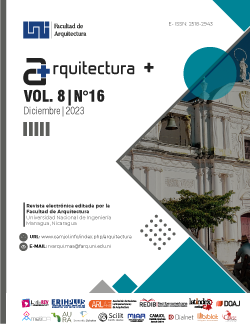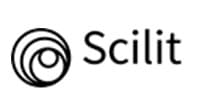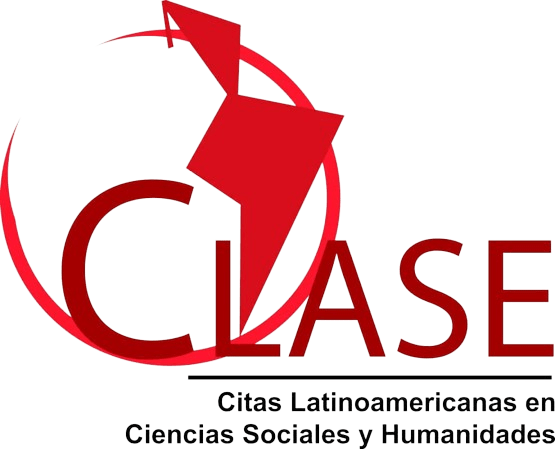Variations in capture times in the development of point cloud models with a Terrestrial Laser Scanner due to fieldwork conditions
DOI:
https://doi.org/10.5377/arquitectura.v8i16.17153Keywords:
Estimates, heritage , TLS, technology, laser-scanningAbstract
Laser scanners have a configuration for 3D capture in which, for certain density (low, medium and high) specific times are available. For low densities, the time it may take to capture point clouds with RGB is close to 7 minutes. However, fieldwork capture times do not depend only on the configuration of the equipment, in instead of it is necessary to take into account a series of human factors that intervene in fieldwork, such as (a) following a planning, (b) the time of placement and adjustment of the tripod per station, (c) the placement and adjustment of the targets and (d) the leveling of the station. These factors are random because they are human factors. So, how much can fieldwork capture time vary considering human conditions? The aim of this study was to estimate the approximate capture time by stations during a 3D survey of building campaign with a TLS model Leica ScanStation C10. To estimate the average measurement time, 3 cases of studies were analyzed: Regina 143, Belisario Domínguez School and the ExTeresa Arte Actual Museum Chapel (CMEAA). Means, medians and standard deviations of the captures with low resolutions were estimated for point clouds and for RGB. Results point out that the average capture time per station was 12 minutes 30 seconds, with standard deviations of 4 minutes and 36 seconds. The time it takes the fieldwork crew to do adjustment activities, on average is 2 minutes and 44 seconds. These data will be useful for planning survey projects with similar instruments.
Downloads
References
Abdel-Bary Ebrahim, M. (2011). 3D laser scanners: History, applicatiosn and future. Assiut, Egypt: Assiut University.
Aguilar, F. J., Nemmaoui, A., Peñaver, A., Rivas, J. R., & Aguilar, M. A. (2019). Developing Allometric Equations for Teak Plantations Located in the Coastal Region of Ecuador from Terrestrial Laser Scanning Data. Forest, 10(1050). doi:10.3390/f10121050
Castagnetti, C., Bertacchini, E., Capra, A., & Dubbini, M. (2012). Terrestrial Laser Scanning for Preserving Cultural Heritage: Analysis of Geometric Anomalies for Ancient Structures. FIG Working Week 2012. Rome, Italy. Obtenido de https://iris.unimore.it/handle/11380/746897
Dallas, R. (2003). Measured Surveys of Historic Buildings: User Requirements and Technical Progress. Journal of Architectural Conservation, 9(2), 58-81. doi:10.1080/13556207.2003.10785343
Eld, M., Mizerák, M., & Trojan, J. (2018). 3d Laser Scanner: History and Applications. Acta Simulatio, 1-5. doi:10.22306/asim.v4i4.54
González-Aguilera, D., Muñoz-Nieto, A., Gómez-Lahoz, J., Herrero-Pascual, J., & Gutierrez-Alonso, G. (2009). 3D Digital Surveying and Modelling of Cave Geometry: Application to Paleolithic Rock Art . Sensors , 9(2), 1108-1127. doi:10.3390/s90201108
Idrees, M. O., & Pradhan, B. (2016). A decade of modern cave surveying with terrestrial laser scanning: A review of sensors, method and application development. International Journal of Speleology, 45(1), 71-88. doi:10.5038/1827-806X.45.1.1923
Klapa, P., Mitka, B., & Zygmunt, M. (2017). Application of Integrated Photogrammetric and Terrestrial Laser Scanning Data to Cultural Heritage Surveying. IOP Conf. Series: Earth and Environmental Science, 95(2017). doi:10.1088/1755-1315/95/3/032007
Komsta, L. (2022). Package ‘outliers’. Repository CRAN. Obtenido de https://search.r-project.org/CRAN/refmans/outliers/html/rm.outlier.html
Kwoczyńska, B., Litwin, U., Piech, I., Obirek, P., & Śledź, J. (2016). The Use of Terrestrial Laser Scanning in Surveying Historic Buildings. 2016 Baltic Geodetic Congress . Poland: IEEE. doi:10.1109/BGC.Geomatics.2016.54
Lee, S. Y., Majid, Z., & Setan, H. (2013). 3D DATA ACQUISITION FOR INDOOR ASSETS USING TERRESTRIAL LASER SCANNING. ISPRS Annals of the Photogrammetry, Remote Sensing and Spatial Information Sciences,Volume II-2/W1, ISPRS 8th 3DGeoInfo Conference & WG II/2 Workshop. Istanbul, Turkey.
Mat-Zam, P., Fuad, N., Yusoff, A., & Majid, Z. (2018). EVALUATING THE PERFORMANCE OF TERRESTRIAL LASER SCANNING FOR LANDSLIDE MONITORING. International Conference on Geomatics and Geospatial Technology. Kuala Lumpur, Malaysia. Obtenido de https://doi.org/10.5194/isprs-archives-XLII-4-W9-35-2018
Mukupa, W., Roberts, G. W., Hancock, C. M., & Al-Manasir, K. (2016). A review of the use of terrestrial laser scanning application for change detection and deformation monitoring of structures. Survey Review. doi:10.1080/00396265.2015.1133039
Pritchard, D., Sperner, J., Hoepner, S., & & Tenschert, R. (2017). Terrestrial laser scanning for heritage conservation: the Cologne Cathedral documentation project. ISPRS Annals of the Photogrammetry, Remote Sensing and Spatial Information Sciences, 4, págs. 213-220. Ottawa, Canada. doi:10.5194/isprs-annals-IV-2-W2-213-2017
Remondino, F. (2011). Heritage Recording and 3D modeling with photogrammetry and 3d scanning. Reomete Sensing, 1104-1138. doi:10.3390/rs3061104
Ryding, J., Williams, E., J. Smith, M., & Eichhorn, M. P. (2015). Assessing Handheld Mobile Laser Scanners for Forest Surveys. Remote sensing, 2015(7), 1095-1111. doi:10.3390/rs70101095
Sirmacek, B., Shen, Y., Lindenbergh, R., Zlatanova, S., & Diakite, A. (2016). COMPARISON OF ZEB1 AND LEICA C10 INDOOR LASER SCANNING POINT CLOUDS. ISPRS Annals of the Photogrammetry, Remote Sensing and Spatial Information Sciences, Volume III-1, 2016. Prague, Czech Republic. doi:10.5194/isprsannals-III-1-143-2016
Soudarissanane, S. S., & Lindenbergh, R. C. (2011). Optimizing terrestrial laser scanning measurement set-up. SPRS Workshop Laser Scanning. Calgary, Canada. doi:10.5194/isprsarchives-XXXVIII-5-W12-127-2011
Suchocki, C., Dami˛ecka-Suchocka, M., Katzer, J., Janicka, J., Rapinski, J., & Stałowska, P. (2020). Remote Detection of Moisture and Bio-Deterioration of Building Walls by Time-Of-Flight and Phase-Shift Terrestrial Laser Scanners. Remote Sensing. doi:10.3390/rs12111708
Tremblay, J.-F., & Béland, M. (2018). Towards operational marker-free registration of terrestrial lidar data in forests. ISPRS Journal of Photogrammetry and Remote Sensing, 146(2018), 430-435. doi:10.1016/j.isprsjprs.2018.10.011
Wu, C., Yuan, Y., Tang, Y., & Tian, B. (2022). Application of Terrestrial Laser Scanning (TLS) in the Architecture, Engineering and Construction (AEC) Industry. Sensors. doi:10.3390/s22010265
Downloads
Published
How to Cite
Issue
Section
License
Copyright (c) 2023 Universidad Nacional de Ingeniería

This work is licensed under a Creative Commons Attribution-NonCommercial-NoDerivatives 4.0 International License.




















